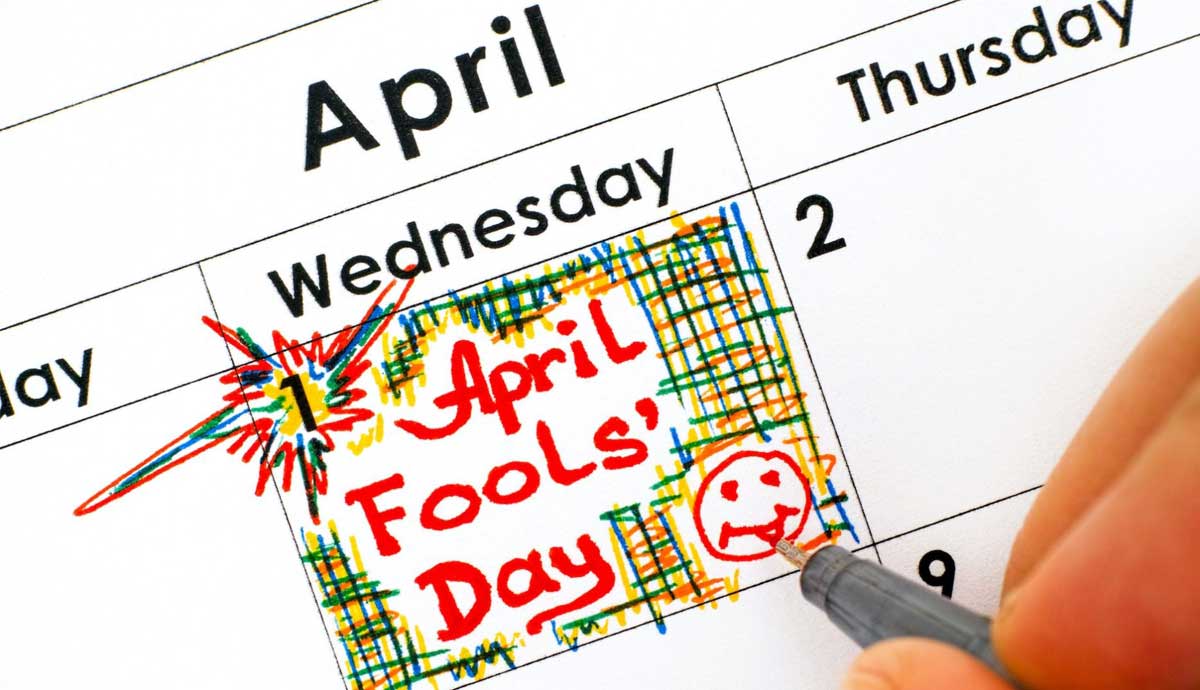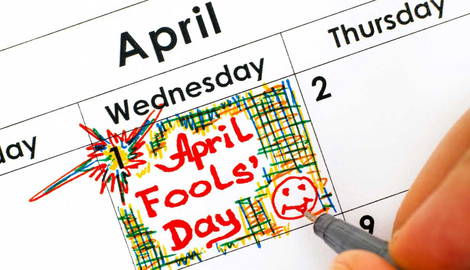
April 1st is celebrated by many as April Fools’ Day, a cheeky date on the calendar when playful pranks abound, within people’s homes, at schools and workplaces, and even in newspaper articles or television programs. The day is known around the world as a light-hearted moment in the diary to try and catch out unsuspecting friends, family, employees, and teachers with silly games to make one another laugh. But where did the tradition come from, and why did it occur on this particular Spring date? The exact origins of April Fools’ Day are unknown, but there are several possible sources that point to its evolution through the ages.
Ancient Rome

Ancient Romans held a celebration called Hilaria on 25 March, a joyful spring festival to celebrate Cybele, Phrygian goddess of nature and fertility, which has been linked with the frivolities of April Fools’ Day. They also held a festival on exactly April 1st, called the Veneralias, dedicated to Venus Veticordia, an epithet of the goddess of love.
In 1983 another story emerged from the Associated Press which linked April Fools’ Day with none other than Emperor Constantine. As the story explained, a group of jesters convinced him to make one of them king for a day. Allegedly a jester called Kugel was given the royal order on April 1, and declared the day to be one of silly fun and jest, thus tying it with April Fools’ Day. However, the story turned out to be a hoax – it was in fact an April Fools’ Day prank written by Boston University professor Joseph Boskin to trick the Associated Press reporter Fred Bayles.
The Middle Ages

It seems likely the tradition of April Fools Day has at least some roots in the European Middle Ages. An early French pastime for playing pranks called “poisson d’avril” or “April Fish” has been found in written records, and was most likely comparing fools who fall for tricks with the bountiful, and therefore gullible nature of fish in France during the spring months. The simple, charming prank involved sticking paper fish to the backs of their friends and family unseen. Once the fish is found, the prankster shouts “poisson d’avril!” It is a game that has persisted through the ages, and one that many still play, particularly with young children.
A Fool’s Errands

However, the first true reference to April Fools’ Day was in a poem called Proverb of a Day of Errands on April 1st by Flemish comic writer Eduard De Dene, published in 1561. In the poem a servant is sent on a series of pointless errands, which he eventually realizes are “fool’s errands” since it is April 1st. Sending unwitting people on errands for non-existent items continued to be a popular prank through the ages, and one that some still practice on unsuspecting friends and family members today.
A Holy Day and Wild Goose Chases

Around a century later, the antiquarian John Aubrey called April 1st “Fooles Holy Day”, noting its prevalence throughout Europe in his book Remaines of Gentilisme and Judaisme. Meanwhile, in 1760 a poem featured in Poor Robin’s Almanac that suggested April Fools’ Day was an entrenched tradition in England, with as yet unknown origins: “The first of April some do say / Is set apart for all Fool’s Day / But why the people call it so / Nor I nor they themselves do know.” Around the same time, American author Anna Green Winslow wrote a diary entry explaining the notion of a “wild goose chase”, carried out by her father or her unsuspecting mother, revealing the pastime’s growing popularity in the U.S.
Modern and Contemporary Pranks

Over the following centuries April Fools’ Day pranks became increasingly elaborate, such as a smoking coin heated up with fire or a cigar, and left lying on the street, which passers by would get burned with if they tried to pick it up. Children have also enjoyed playing pranks on teachers, such as locking them out of the classroom, or putting tacks on tape for the teacher to sit on.
Meanwhile April Fools’ Day pranks have even made it into the international press, with stories ranging from the fake ‘Swiss spaghetti harvest’, broadcast by the BBC in 1957 in which people supposedly gathered spaghetti from local trees and shrubs, to the fake eruption of Mount Edgecumbe volcano in Alaska in 1974, and Burger King’s supposed “left-handed whopper”, in which they claimed the contents had been rearranged to suit left-handed consumers.










